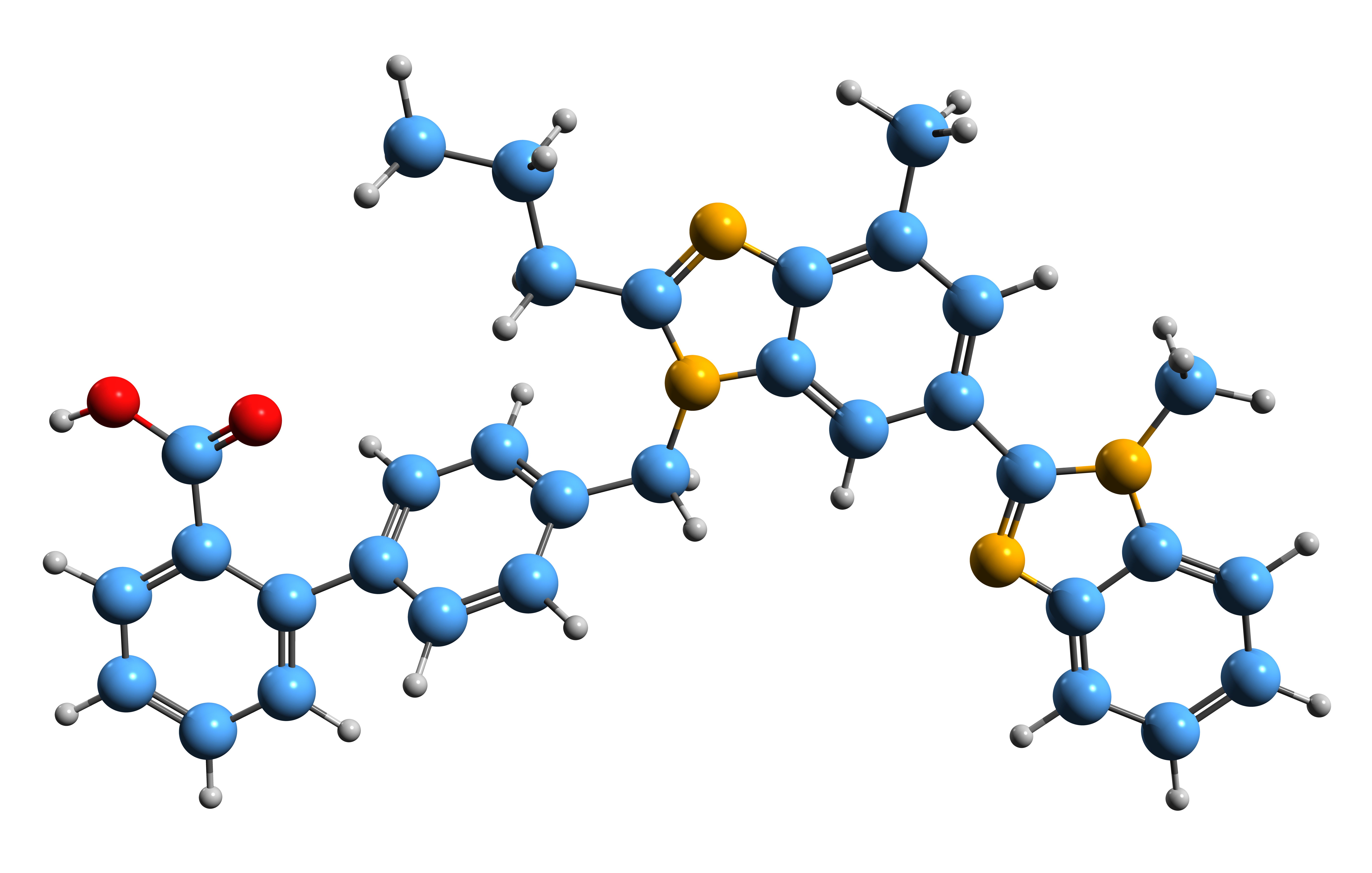New Method Developed to Detect N-Nitrosamines in Pharmaceuticals
Sartans are important drugs that help treat hypertension and heart failure. However, since their recall in 2018 because of the presence of genotoxic impurities in these drugs, researchers are tackling the question of how to detect these impurities in these drugs before they go to market. This article describes a HPLC–APCI-MS/MS method that can help in this endeavor.
The pharmaceutical industry has been facing concerns over genotoxic impurities in their products, particularly N-nitrosamines, since the large-scale recall of sartans in 2018. As a result, a big focus for researchers right now is developing analytical methods that can detect these impurities in drugs, food, and environmental samples. One of these novel analytical methods comes courtesy of researchers from Huazhong University of Science and Technology.
3D image of Telmisartan skeletal formula - molecular chemical structure of high blood pressure medication isolated on white background | Image Credit: © kseniyaomega - stock.adobe.com

In a recent study published in the Journal of Separation Science, Chunyang Shi and colleagues from the abovementioned university developed a sensitive method for the trace determination of N-nitrosamine impurities in metronidazole benzoate pharmaceuticals (1).
Sartans are a group of drugs used primarily to treat hypertension (high blood pressure) and heart failure. They work by blocking the action of a hormone called angiotensin II, which causes blood vessels to constrict and increase blood pressure. By blocking the action of angiotensin II, sartans help to widen blood vessels and lower blood pressure. Sartans are also used to treat diabetic kidney disease and to reduce the risk of stroke and heart attack in patients with a history of cardiovascular disease. In 2018, sartans were recalled worldwide because of the detection of N-nitrosamine impurities, which are potentially carcinogenic.
The team used high performance liquid chromatography (HPLC) coupled with atmospheric-pressure chemical ionization tandem mass spectrometry (APCI-MS/MS) in the multiple reaction monitoring mode to detect the impurities. They validated the method in terms of system suitability, selectivity, linearity, accuracy, precision, sensitivity, solution stability, and robustness.
APCI-MS/MS involves ionizing the sample by generating charged particles through chemical reactions with a reagent gas at atmospheric pressure. These charged particles are then separated based on their mass-to-charge (m/z) ratio and fragmented to generate a mass spectrum that provides information about the molecular structure and composition of the sample. The sensitivity and selectivity of APCI-MS/MS make it a powerful tool for a wide range of applications in fields such as pharmaceuticals, environmental analysis, and food safety.
The study found that the method was highly sensitive, with low limits of detection (LODs) for N-nitrosamines in the range of 0.22–0.80 ng/mL (0.0014–0.0050 ppm) and low limits of quantification (LOQs) in the range of 0.33–1.20 ng/mL (0.0021–0.0075 ppm). The recoveries of N-nitrosamines ranged from 84% to 97%, indicating that the method was fairly accurate.
The researchers note that this method offers a simple, scientific strategy for detecting N-nitrosamine impurities in pharmaceuticals to support the development of the pharmaceutical industry. As such, it could be useful for regulatory authorities in monitoring the quality and safety of pharmaceutical products.
Overall, the study highlights the importance of developing analytical methods to detect genotoxic impurities in pharmaceuticals and the potential of HPLC–APCI-MS/MS in this field.
Reference
(1) Yin, M.; Hu, Y.; Fan, H.; Wang, Q.; Wang, M.; Wang, W.; Shi, C. Method for trace determination of N-nitrosamines impurities in metronidazole benzoate using high-performance liquid chromatography coupled with atmospheric-pressure chemical ionization tandem mass spectrometry. J. Sep. Sci. 2022, ASAP. DOI: 10.1002/jssc.202200225
Separating Impurities from Oligonucleotides Using Supercritical Fluid Chromatography
February 21st 2025Supercritical fluid chromatography (SFC) has been optimized for the analysis of 5-, 10-, 15-, and 18-mer oligonucleotides (ONs) and evaluated for its effectiveness in separating impurities from ONs.




